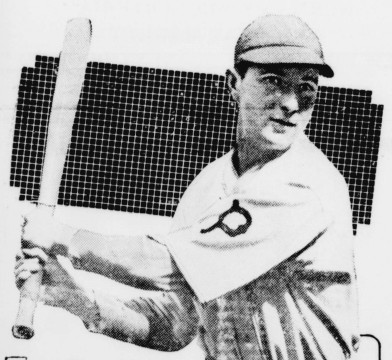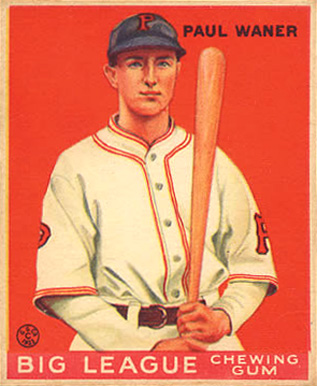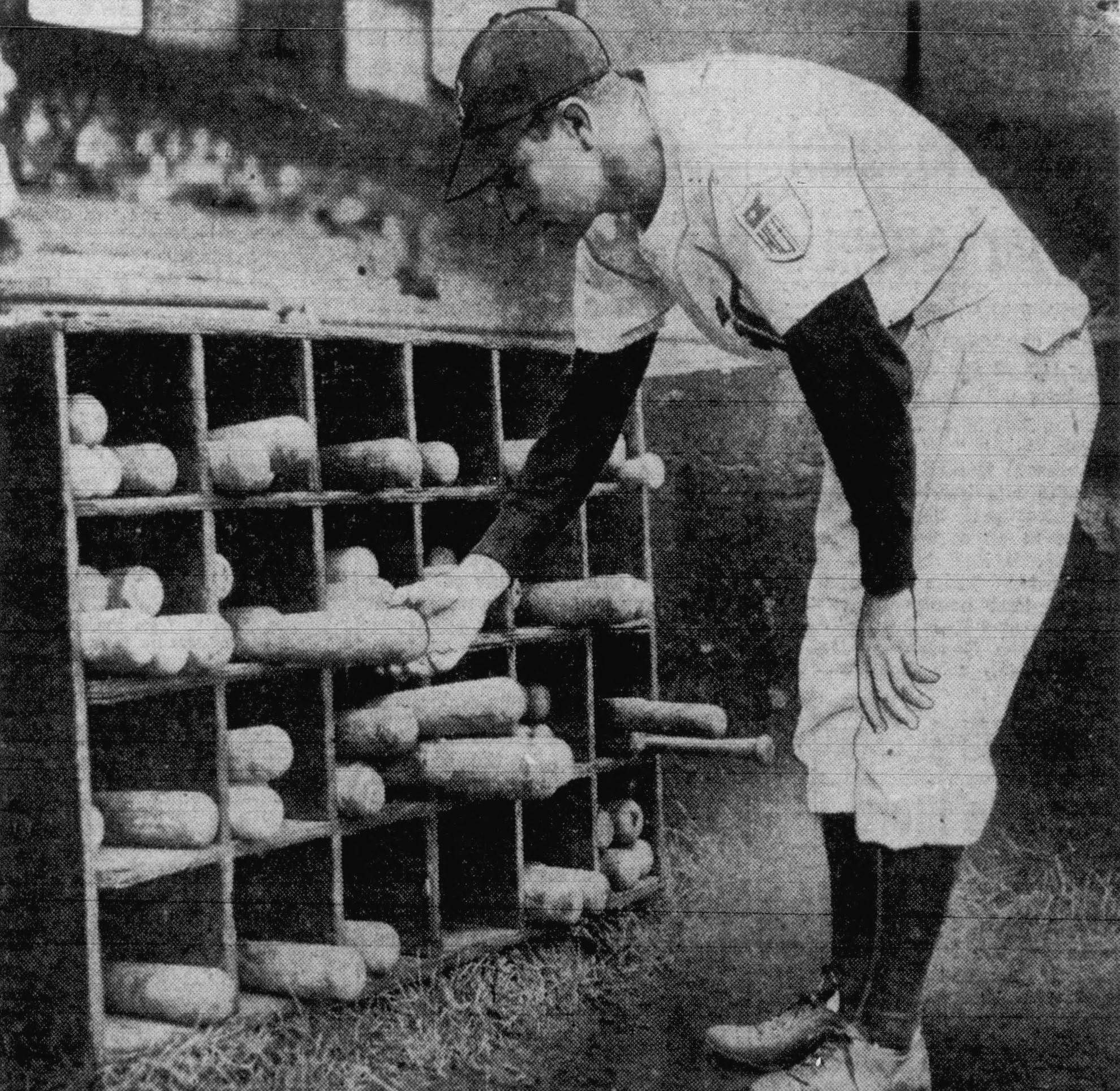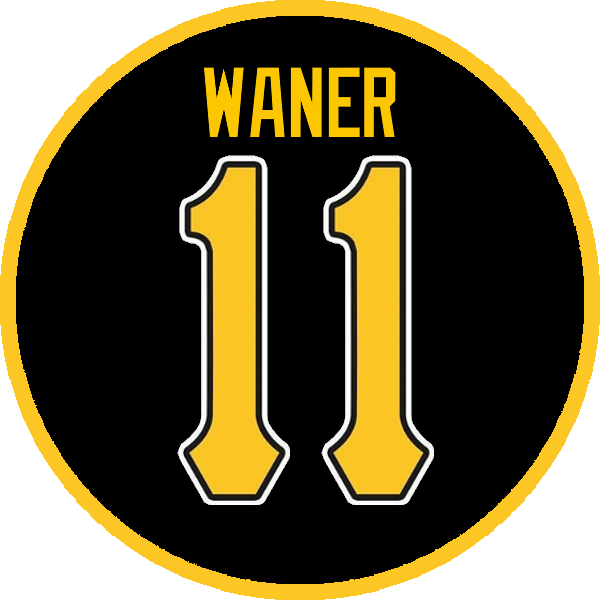1. Early Life and Minor League Career
Paul Waner's early life and development as a baseball player laid the foundation for his illustrious Major League career.
1.1. Childhood and Education
Paul Glee Waner was born on April 16, 1903, in Harrah, Oklahoma, four years before the region became a state. He was the third of five children born to Ora and Etta Waner. His father, Ora, had once been offered a contract by the Chicago White Stockings but chose instead to settle on a 400 acre (400 acre) farm. Paul was originally given the middle name John, but it was later changed to Glee after an uncle named Glee gave him a shotgun when he was six years old.
Waner often stated that he learned to bat by hitting corncobs on his father's farm, an activity that helped him develop the ability to track the ball by observing its movement. Despite having astigmatism, he preferred not to wear glasses on the field. He found that without glasses, a baseball appeared to him as large as a grapefruit, making it easier to hit the center of the ball. Conversely, wearing glasses made the ball appear smaller and in focus, which he disliked.
He played baseball at East Central University (then known as East Central State Teachers College) in Ada, Oklahoma. In 1922, he had a remarkable season as a pitcher, compiling a 23-4 record with a 1.70 ERA (earned run average). Although his parents had hoped he would become a teacher, Waner ultimately chose to pursue professional baseball and dropped out of college.
1.2. Minor League Development
Paul Waner began his professional baseball career by signing with a team in Joplin, Missouri, which competed in the Class A Western League. He was subsequently sent to Muskogee in the Southwestern League, an equivalent of a Rookie League at the time. In 1923, he was sold to the San Francisco Seals of the Pacific Coast League, then a Class AA team, where the manager was former Pirate Dots Miller.
Waner pitched only one game for the Seals in 1924 before transitioning to an outfield position. This shift proved to be highly successful. Over three seasons with the Seals, he achieved an impressive .378 batting average. In their 1925 championship season, Waner posted exceptional numbers, hitting .401 with 280 hits and 75 doubles. These outstanding performances caught the attention of Major League teams.
2. Major League Career
Paul Waner's Major League Baseball career spanned nearly two decades, marked by consistent hitting prowess, record-setting achievements, and a unique partnership with his younger brother.
2.1. Pittsburgh Pirates (1926-1940)
In October 1925, the Pittsburgh Pirates of the National League purchased Waner and his teammate Hal Rhyne from the San Francisco Seals for 100.00 K USD. Waner made his Major League debut on April 13, 1926, as a pinch hitter against the St. Louis Cardinals in their opening game. On April 17, 1926, he collected his first major league hit against the Cincinnati Reds. By May, he had established himself as a regular right fielder. On August 26, 1926, Waner accomplished the rare feat of collecting six hits in six at-bats in a game against the Giants, using six different bats from six different players. He finished his rookie season with a .336 batting average, leading the NL with 22 triples, and finished 12th in MVP voting as the Pirates placed third.

The 1927 season was a breakout year for Paul and saw the debut of his younger brother, Lloyd Waner, who became his teammate. Together, the "Poison Brothers" (Paul "Big Poison" and Lloyd "Little Poison") accumulated 460 hits that season. Paul's 1927 season was exceptional; he played in a career-high 155 games (leading the league) and led the NL in hits (237, a team record), triples (18), batting average (.380), and RBIs (131). He also posted a .437 on-base percentage and a .986 OPS. He set a major league record by achieving an extra-base hit in 14 consecutive games (from June 3 to June 19, 1927), a feat later matched by Chipper Jones in 2006. Aided by the Waner brothers' contributions, the Pirates advanced to the 1927 World Series. In his only postseason appearance, Paul hit .333 (5-for-15) with 3 RBIs, but the Pirates were swept by the formidable "Murderer's Row" New York Yankees. For his outstanding performance in 1927, he was awarded the National League Most Valuable Player Award, narrowly beating out Frankie Frisch.

In 1928, Waner continued his strong performance, leading the NL in doubles (50) and runs scored (142, a career high), while batting .370. His 223 hits were tied with Lloyd for the second-most in team history. The 1929 season began with a contract dispute that caused him to miss spring training, but he still managed a career-high 15 home runs, 200 hits for the third consecutive season, a .336 average, 43 doubles, and 100 RBIs for the second-place Pirates. In 1930, playing in 145 games, he recorded 217 hits with a .368 batting average and 117 runs. The 1931 season was considered disappointing for Waner, as he was injured during spring training and missed time. Despite this, he hit .322 with 180 hits in 150 games. This was the first time in his career that the Pirates finished with a losing record (75-79).
Waner bounced back in 1932, hitting .341 with 215 hits (his fifth season with over 200 hits). He played all 154 games and set the National League record for doubles in a season with 62. On May 12, he tied a major league record by hitting four doubles in a single game. In 1933, his average dipped to a career-low .309, and he recorded 191 hits, the first time his average fell below .320. This year also marked the inaugural Major League Baseball All-Star Game, where Waner was selected as a reserve outfielder. The Pirates finished second in the NL in both 1932 and 1933.
In 1934, Waner won his second NL batting title, hitting .362 and leading the league in hits (217) and runs (122). This was his sixth season with 200 or more hits. He finished second in MVP voting to Dizzy Dean and was selected for his second MLB All-Star Game. In 1935, manager Pie Traynor suggested Waner switch from hard liquor to beer, which initially impacted his performance, dropping his average to .242 by May 18. After Traynor famously ordered him a shot of whiskey before a game, Waner hit .331 for the rest of the season, finishing with a .321 average, 78 RBIs, and 176 hits in 139 games. He was selected for his third All-Star Game. In 1936, Waner won his third NL batting title with a .373 batting average, his second-highest career mark, along with 94 RBIs, 53 doubles, and 218 hits. He collected over 200 hits for the final time in 1937, batting .354 with 74 RBIs. This was his eighth season with 200 or more hits; at the time, only Hall of Famer Ty Cobb had more (nine). This also marked his fourth and final MLB All-Star Game selection.
Waner was famously able to hit effectively while hung over. When he gave up drinking in 1938 at management's request, his batting average dropped to .280, one of only two times he failed to hit .300 as a Pirate. That year, he recorded 69 RBIs, 31 doubles, and 175 hits in 148 games. Manager Casey Stengel once complimented his base-running skills by saying, "He had to be a very graceful player, because he could slide without breaking the bottle on his hip." Waner rebounded in 1939 with a .328 average, 45 RBIs, and 151 hits in 125 games; this was his last season with over 100 hits. He amassed 1,959 of his 3,152 career hits in the 1930s, with five 200-hit seasons during that decade. He received MVP votes five times in the 1930s. The 1940 season was Waner's last with the Pirates. He hit .290 with 32 RBIs and 69 hits in 89 games, having missed three weeks due to pulled ligaments in his right knee after stepping awkwardly on a base. He was released by the Pirates on December 5, 1940. In his 15-year career with Pittsburgh, he accumulated 2,868 hits, 1,177 RBIs, 558 doubles, 187 triples, and a .340 batting average in 2,154 games. The Pirates finished with a losing record only three times during his tenure and were among the top three NL teams seven times between 1926 and 1940.
2.2. Later MLB Career (1941-1945)
On January 31, 1941, Waner signed with the Brooklyn Dodgers, where he was expected to patrol the outfield alongside Hall of Famer Joe Medwick. After a strong spring training, he was offered the starting right field position. However, he was released by the Dodgers after just 11 games, having hit only .171 with six hits. Two weeks later, he was signed by the Boston Braves. He finished the 1941 season with a combined .267 average, 50 RBIs, and 88 hits in 106 games between the two teams. He spent the next season with the Braves, recording a .258 average, 39 RBIs, and 86 hits in 114 games.

On June 17, 1942, in the second game of a doubleheader against the Cincinnati Reds, Waner appeared to achieve his 3,000th career hit with a sharp ground ball that shortstop Eddie Joost fumbled, which was initially ruled an infield hit. However, Waner famously waved his hand towards the press box, indicating to the official scorer that he wanted his 3,000th hit to be "a clean one" and requested the ruling be changed to an error on Joost, which it was. Two days later, on June 19, 1942, against his former team, the Pittsburgh Pirates, Waner achieved his 3,000th hit with a clean single to left field off his old teammate, Rip Sewell. He became the seventh player in MLB history to reach this milestone, joining Ty Cobb, Tris Speaker, Honus Wagner, Eddie Collins, Nap Lajoie, and Cap Anson.
Waner was released by Boston on January 19, 1943. Just two days later, the Dodgers re-signed him. A spike injury to his foot caused him to miss some time, but he still managed to hit .311 in 82 games, with 36 RBIs and 70 hits, which was a career low for a full season played. The 1944 season was his last full season in MLB. He played 92 total games, 83 with the Dodgers and nine with the New York Yankees after being released by the Dodgers on September 1. He batted .280 with 17 RBIs and 40 hits that year. He played one final game for the Yankees in 1945, making a single plate appearance as a pinch hitter where he drew a walk, marking the end of his Major League career.
After his MLB career concluded, Waner continued to play in minor league baseball. In 1946, he played for and served as the player-manager of the Miami Sun Sox in the Florida International League, formally retiring from playing after that season.
3. Later Life and Legacy
Paul Waner's influence extended beyond his playing days, leaving a lasting mark on baseball history through his unique approach to hitting and his numerous achievements.
3.1. Coaching and Personal Life
After his playing career, Paul Waner remained active, enjoying hobbies such as fishing, hunting, and golfing. He was a proficient golfer, often shooting in the 70s, and was instrumental in founding the National Baseball Players Golf Tournament. Beyond his personal pursuits, he also served as a part-time hitting coach for several MLB teams, including the Philadelphia Phillies, St. Louis Cardinals, and Atlanta Braves. He reportedly provided batting instruction to Dick Groat, a fellow Pirate.
Ted Williams, one of baseball's greatest hitters, credited Waner with providing him key advice: to move away from the plate to effectively counter the defensive strategy known as the "Williams Shift" (also called the "Boudreau Shift"). Despite his deep knowledge of hitting, some observers, like Frank Russo, noted that Waner's "distaste for discipline made him an inappropriate candidate for managing," drawing a comparison to Babe Ruth. In his spare time, Waner enjoyed reading the works of Seneca the Younger and even authored a comedy skit in which he and Heinie Manush performed.
3.2. Death
Paul Waner died on August 29, 1965, in Sarasota, Florida. His death, at the age of 62, was attributed to respiratory arrest, complicated by emphysema and pneumonia.
3.3. Achievements and Records
Paul Waner's career was marked by numerous statistical accomplishments and records that solidified his place in baseball history. He led the National League in batting on three occasions (1927, 1934, 1936). Over his 20-year professional baseball career, he accumulated 3,152 hits. At the time of his retirement, his 605 doubles ranked fifth all-time. He achieved 200 or more hits in eight separate seasons and recorded 50 or more doubles in three seasons. He was voted the NL's Most Valuable Player in 1927. His lifetime batting average of .333 is tied for the fifth-highest among members of the 3,000 hit club. Additionally, his 191 triples rank 10th all-time in MLB history.
Waner's individual game performances were also notable: he recorded one six-hit game, five five-hit games, and 55 four-hit games throughout his career. Casey Stengel once declared Waner the best right fielder in National League history. Frank Russo praised Waner as "a speedy outfielder who possessed perhaps the strongest arm in a Pittsburgh outfield until the arrival of Roberto Clemente." Waner himself had a reputation for being fearless at the plate, stating, "I never let them [pitchers] get the better of me. If you flinch and show any fear, you're done."
The combination of Paul's 3,152 hits and his younger brother Lloyd's 2,459 hits gives them a career record of 5,611 hits by brothers. This surpasses the three Alou brothers (Felipe (2,101), Matty (1,777), and Jesús (1,216)) who combined for 5,094 hits, and the three DiMaggio brothers (Joe (2,214), Dom (1,680), and Vince (959)) who totaled 4,853 hits. For most of the period from 1927 to 1940, Paul played right field at Forbes Field while Lloyd covered center field next to him. On September 15, 1938, the brothers famously hit back-to-back home runs against Cliff Melton of the New York Giants.
The following table details Paul Waner's annual batting statistics throughout his Major League career:
| Year | Team | Games | At-Bats | Runs | Hits | Doubles | Triples | Home Runs | RBIs | Batting Average | On-Base Percentage | Slugging Percentage | OPS |
|---|---|---|---|---|---|---|---|---|---|---|---|---|---|
| 1926 | PIT | 144 | 618 | 101 | 180 | 35 | 22 | 8 | 79 | .336 | .413 | .528 | .941 |
| 1927 | PIT | 155 | 709 | 114 | 237 | 42 | 18 | 9 | 131 | .380 | .437 | .549 | .986 |
| 1928 | PIT | 152 | 697 | 142 | 223 | 50 | 19 | 6 | 86 | .370 | .446 | .547 | .992 |
| 1929 | PIT | 151 | 703 | 131 | 200 | 43 | 15 | 15 | 100 | .336 | .424 | .534 | .958 |
| 1930 | PIT | 145 | 665 | 117 | 217 | 32 | 18 | 8 | 77 | .368 | .428 | .525 | .952 |
| 1931 | PIT | 150 | 646 | 88 | 180 | 35 | 10 | 6 | 70 | .322 | .404 | .453 | .857 |
| 1932 | PIT | 154 | 697 | 107 | 215 | 62 | 10 | 8 | 82 | .341 | .397 | .510 | .906 |
| 1933 | PIT | 154 | 694 | 101 | 191 | 38 | 16 | 7 | 70 | .309 | .372 | .456 | .828 |
| 1934 | PIT | 146 | 677 | 122 | 217 | 32 | 16 | 14 | 90 | .362 | .429 | .539 | .968 |
| 1935 | PIT | 139 | 623 | 98 | 176 | 29 | 12 | 11 | 78 | .321 | .392 | .477 | .869 |
| 1936 | PIT | 148 | 666 | 107 | 218 | 53 | 9 | 5 | 94 | .373 | .446 | .520 | .965 |
| 1937 | PIT | 154 | 690 | 94 | 219 | 30 | 9 | 2 | 74 | .354 | .413 | .441 | .855 |
| 1938 | PIT | 148 | 680 | 77 | 175 | 31 | 6 | 6 | 69 | .280 | .331 | .378 | .709 |
| 1939 | PIT | 125 | 506 | 62 | 151 | 30 | 6 | 3 | 45 | .328 | .375 | .438 | .813 |
| 1940 | PIT | 89 | 261 | 32 | 69 | 16 | 1 | 1 | 32 | .290 | .352 | .378 | .731 |
| 1941 | BRO/BSN | 106 | 385 | 45 | 88 | 10 | 2 | 2 | 50 | .267 | .372 | .328 | .701 |
| 1942 | BSN | 114 | 404 | 43 | 86 | 17 | 1 | 1 | 39 | .258 | .376 | .324 | .701 |
| 1943 | BRO | 82 | 267 | 29 | 70 | 16 | 0 | 1 | 26 | .311 | .406 | .396 | .802 |
| 1944 | BRO/NYY | 92 | 173 | 17 | 40 | 4 | 1 | 0 | 17 | .280 | .401 | .322 | .723 |
| 1945 | NYY | 1 | 1 | 0 | 0 | 0 | 0 | 0 | 0 | .000 | 1.000 | .000 | .000 |
| Career Total (19 years) | 2549 | 10762 | 1627 | 3152 | 605 | 191 | 113 | 1309 | .333 | .404 | .473 | .878 | |
3.4. Nickname and Anecdotes
Paul Waner's famous nickname, "Big Poison," and his brother Lloyd's "Little Poison," originated during a game at the Polo Grounds in the 1927 season. A fan, due to a New York accent, pronounced "person" as "poison" when calling out to the brothers, leading to the lasting monikers. While a popular story suggests the origin was at Ebbets Field in Brooklyn, Paul himself stated it was a Giants fan at the Polo Grounds.
Waner was known for his unconventional habits that seemingly contributed to his hitting success. He would sometimes drink whiskey before stepping up to the plate, claiming it helped him relax and made the baseball appear as large as a "basketball." This practice led to the humorous observation from Casey Stengel that Waner was "a very graceful player, because he could slide without breaking the bottle on his hip." Despite having nearsightedness, Waner never wore glasses on the field. He believed that wearing them made the ball look smaller and too focused, whereas without them, the ball appeared "grapefruit-sized," making it easier to hit squarely. Waner was also known for advocating a specific grip, advising hitters to align the knuckles of both hands when holding the bat.
3.5. Hall of Fame and Jersey Retirement
Paul Waner was elected to the National Baseball Hall of Fame on July 21, 1952. Upon receiving the news, he remarked, "Gee. It's what I've been looking for a long time, but I had almost given up hope of making it. In fact, I guess you can say I've achieved my life's ambition. Any baseball player's ambition." When his brother Lloyd was inducted into the Hall of Fame in 1967, they became only the second pair of brothers to achieve this honor, following Harry Wright and George Wright.
In 1999, Waner was ranked number 62 on The Sporting News' list of the 100 Greatest Baseball Players and was nominated as a finalist for the Major League Baseball All-Century Team. Through persistent efforts by the Waner family and two longtime Pirates fans who repeatedly petitioned then-owner Kevin McClatchy, Waner's uniform number was eventually retired.

The Pittsburgh Pirates retired Waner's No. 11 jersey in a ceremony held before their game against the Houston Astros on July 21, 2007. This date was significant, as it was precisely 55 years after his induction into the Hall of Fame. A commemorative plaque was installed inside PNC Park to honor the retirement of Waner's jersey, cementing his enduring legacy with the Pirates franchise.